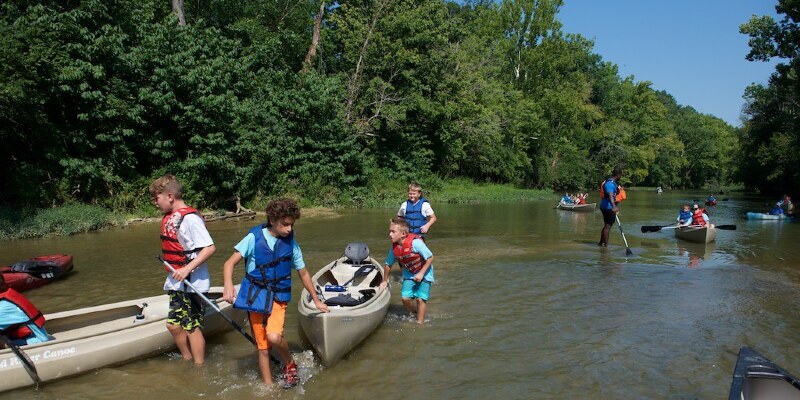Covering a ditch with bud reduces soil erosion caused by fast-running water. Many ditches alternate between dry and wet, so grass planted along the banks at the ditch must be adaptable to the fluctuation in moisture. Pick cosmetic grass varieties that meet the growing conditions along the ditch.
Evergreen Sun-Loving Grasses
Evergreen grasses remain green all year, providing coverage throughout the winter season. Fox red curly sedge (Carex buchananii) grow at U.S. Department of Agriculture plant hardiness zones 5 through 9, making clumps of red-bronze blades using faded tips reaching 2 to 3 feet tall and wide. This evergreen perennial is native to low-lying wetlands and tolerates dry conditions. Lemon grass (Cymbopogon citratus), a culinary herb, which grows in USDA zones 10 and 11, reaching 2 to 4 feet tall spreading two to three feet wide. The fragrant green blades are 1 inch wide with an arching, strap-shaped form.
Evergreen Shade-Loving Grasses
Shade-loving evergreen grasses require some protection from the sun, which may burn off their blades. Although ditch areas have a tendency to keep moist, extreme sunlight can dry out the area. One moisture-adaptable bud is dwarf umbrella grass (Cyperus albostriatus), which stays green in USDA zones 10 and 11, with 8- to 20-inch-tall erect stems topped by broad-leaf blades. This North American native grass seems great when grown with purple or Asian plants. Muhly grass (Muhlenbergia capillaris), which grows in USDA zones 6 through 10, produces 4-foot-tall stalks topped with billowy, pink airy flowers in fall forming clumps 1 to 3 feet wide. The flowering stems work well in cut flower arrangements.
Herbaceous Sun-Loving Grasses
Herbaceous grasses stop growing when the weather becomes too hot or cold. The shirts may die back when the grass goes dormant. For instance, bulbous oat grass (Arrhenatherum elatius bulbosum “Variegatum”) enjoys moist growing conditions and cool weather. In USDA zones 4 through 8, blue-green clumps reach 12 inches tall and 18 inches wide. This slow-growing grass doesn’t flower. Variegated moor grass (Molinia caerulea “Variegata”) grows in USDA zones 5 through 9, producing green blades with white stripes and late-night purple blossoms reaching 12 to 18 inches tall. This moisture-adaptable grass works well as a ground cover.
Herbaceous Shade-Loving Grasses
Herbaceous shade-loving grasses are those to plant in wet areas with less than six hours of sunlight. One shade-loving grass is that the “Gyoku-ryu” mondo grass (Ophiopogon japonicus “Gyoku-ryu”), which is a dwarf variety reaching only 1 to 2 inches tall, clumping 12 inches wide, in USDA zones 7 through 10. In summer, tiny pale lavender flowers appear on short stems hidden by the leaves. This ground-covering grass doesn’t tolerate to full sunlight. Yellow foxtail grass (Alopecurus pratensis “Aureus”) produces variegated green and yellow blades at USDA zones 5 through 8, providing the ideal shade in cool weather reaching 12 inches tall and 24 inches wide. Green foxtail-like plumes grow to 30 inches tall in spring. This grass provides erosion control along ditch slopes and tolerates coastal conditions.
